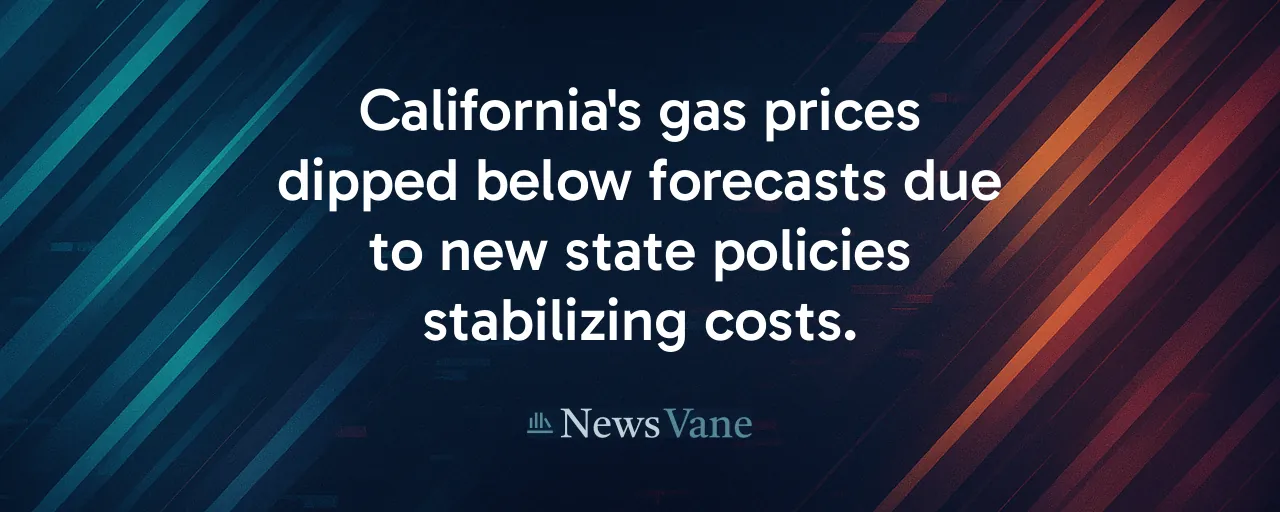A Summer Surprise at the Pump
California drivers braced for a wallet-draining summer after warnings of a 65-cent gas price surge by July 1, 2025. Instead, prices dipped, hitting their lowest July levels in years. Governor Gavin Newsom hailed new state policies for stabilizing costs, while others pointed to market shifts. This unexpected relief sparked fresh debate over what truly drives the state's notoriously high fuel prices and how to keep them manageable.
The anticipated spike, tied to a routine gas-tax adjustment and updated clean-fuel rules, never materialized. Average pump prices fell below predictions, offering a reprieve for motorists planning record-breaking holiday travel. This moment underscores a broader question: how can California balance its ambitious climate goals with affordable fuel for its residents?
Unpacking the Price Puzzle
California's gas prices consistently rank among the nation's highest, averaging $1.40 to $1.80 above the U.S. mean. State taxes and fees, including a 61.2-cent-per-gallon excise tax, account for about 70 cents of the gap. Specialty fuel blends and climate programs, including the Low-Carbon Fuel Standard (LCFS), add approximately 40 cents per gallon, according to Stillwater Associates’ 2025 analysis. Limited refining capacity and supply disruptions often explain the rest.
Recent reforms, like Newsom's 2023 transparency law and 2024 refinery inventory mandates, aim to curb sudden price jumps. These rules require oil companies to report detailed financials and maintain minimum fuel stocks. Data from the California Energy Commission shows prices stabilized after these changes, suggesting better oversight can limit market volatility.
Some argue these regulations add complexity without addressing root causes. A USC Marshall School study attributes California's price premium to layered taxes and mandates, rather than corporate profiteering. With refineries like Phillips 66 in Wilmington and Valero Benicia facing potential closure, supply risks remain a pressing concern.
The Ripple Effects of Fuel Costs
High gas prices hit hardest in rural areas and low-income households, where families spend a larger share of their income on fuel. Trucking, agriculture, and tourism also feel the pinch, driving up costs for goods and services. Gas-tax revenue, exceeding $5 billion annually, funds critical road and transit projects, creating a delicate balance.
Environmental policies like the LCFS aim to cut carbon emissions, offering long-term savings as vehicles become more efficient. UC Davis research projects a 42 percent drop in per-mile fuel costs by 2045. Rural drivers, with limited access to electric vehicle charging or public transit, face immediate burdens without clear alternatives.
Learning From the Past
California's fuel market has long been a battleground. In the 1990s, reformulated gasoline rules created a unique state blend, raising costs but improving air quality. By 2015, the LCFS set aggressive carbon reduction goals, followed by gas-tax hikes in 2017. A 2022 price surge to over $6 per gallon prompted Newsom's push for profit oversight, leading to today's transparency laws.
Attorney-General reports since 1999 consistently cite low inventories and limited suppliers as price drivers, with little evidence of widespread collusion. These findings highlight a structural challenge: California's fuel market operates like an island, vulnerable to refinery outages and global crude swings.
Balancing Act for the Future
Addressing California's gas price dilemma requires pragmatic solutions that bridge economic and environmental priorities. One option is adopting E15 fuel blends statewide, which UC Berkeley research suggests could cut prices by 20 cents per gallon. This would require federal waivers and station upgrades but offers near-term relief without derailing clean-energy goals.
Targeted rebates during price spikes could ease burdens for low-income drivers, while a joint task force of industry and state officials might streamline refinery maintenance and imports. Such steps could stabilize supply without rigid profit caps, which risk discouraging investment and accelerating refinery closures.
A Road Worth Traveling
California's gas price saga reveals a complex interplay of taxes, regulations, and market forces. While recent reforms have tempered volatility, structural challenges persist. Drivers deserve solutions that prioritize affordability without sacrificing the state's commitment to cleaner air and energy innovation.
By blending data-driven oversight with flexible policies, California can chart a course that supports motorists, businesses, and the environment. The July 2025 price drop proves progress is possible when pragmatism guides the way.
As the state navigates this terrain, collaboration among lawmakers, industry, and communities will be key. Transparent policies, paired with targeted relief, can ensure fuel costs don't derail California's economic or environmental ambitions.
